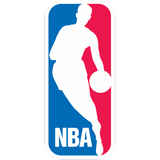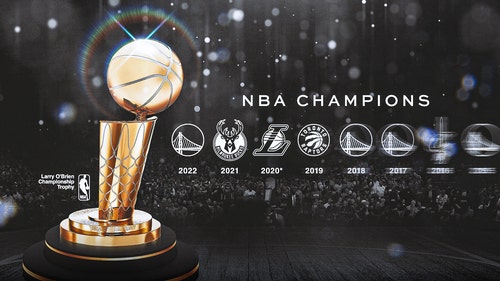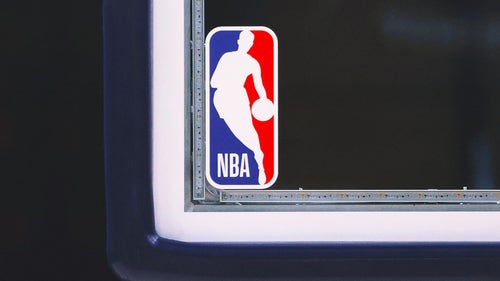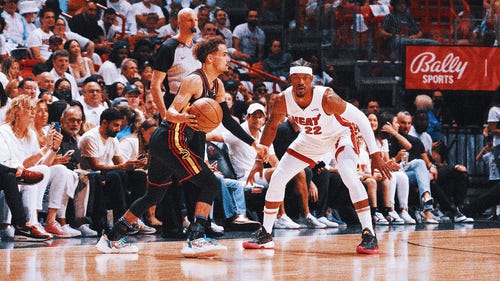
Top 5 Players From The 2010 NBA Draft
In a draft class headlined by members of John Calipari’s inaugural Kentucky Wildcat team, here’s the five players who are the creme of the 2010 crop.
SACRAMENTO, CALIFORNIA – MARCH 30: John Wall
2009 was a monumental year for college basketball because it marked a power shift that is still in effect today. That spring, University of Memphis head coach John Calipari made a seismic move by leaving a powerhouse he had established to become the lead man at one of college basketball’s most storied programs in the University of Kentucky.
Since then, Coach Cal has returned the Wildcats to the ranks of the elite and established a dynasty in Lexington, making the NCAA Tournament in every season but one with four Final Four appearances, three National Championship Game appearances and a national championship in 2012.
While #BigBlueNation has five top recruiting classes during Calipari’s tenure and has churned out multiple NBA stars and star-caliber players, there may not have been a more impressive or talented one than his inaugural freshman class in 2009, headlined by a super-athletic point guard from North Carolina named John Wall.
Wall rose from being a relative unknown to the jewel of the 2009 recruiting class as a fifth-year senior at Word of God Christian Academy in Raleigh by averaging 19.7 points, nine boards and eight assists a game.
He came into his freshman year at the University of Kentucky with expectations of being college basketball’s brightest star and he did not disappoint, posting averages of 16.6 points, 6.5 assists, 4.3 rebounds and 1.8 steals a night and captivating fans with his ridiculous athleticism, blinding end-to-end speed and trademark dance.
Joining Wall in Lexington were two stellar recruits from Alabama in fiery center DeMarcus Cousins and explosive guard Eric Bledsoe. Paired with senior forward Patrick Patterson, the trio led Calipari’s initial Wildcats team to an 35-3 season where they won an SEC championship and bowed out in a stunning loss to West Virginia in the Elite Eight.
Six years later, Wall, Cousins and Bledsoe have all become forces to be reckoned with in the NBA. However, there were several other players who went unheralded at the time that have emerged as some of the best players at their positions and in the league overall.
Here’s a look at the five players who sit atop of the 2010 draft class.
Nov 15, 2015; Atlanta, GA, USA; Utah Jazz forward Gordon Hayward (20) and forward Derrick Favors (15) react after defeating the Atlanta Hawks at Philips Arena. The Jazz defeated the Hawks 97-96. Mandatory Credit: Dale Zanine-USA TODAY Sports
Honorable Mentions
Derrick Favors, Utah Jazz (Rd. 1, Pick 3): It took awhile for Derrick Favors to blossom, but it seems his talents have finally come into full bloom.
The former Georgia Tech forward only spent half a season with the team that drafted him in the New Jersey Nets before being dealt to the Utah Jazz as a part of the Deron Williams trade. However, Favors continued to struggle to find footing or significant playing time under head coaches Jerry Sloan and Tyrone Corbin, putting up a mere 8.8 points and 6.3 rebounds in 21.5 minutes of play a game.
Favors has since emerged as one of the more underrated forwards in the league and one of the pillars of a young Jazz team on the rise.
He’s averaged 15.2 points, 8.3 boards and 1.6 blocks a night since moving into the starting lineup in the 2013-14 season and had somewhat of a breakout season last year, putting up a career-high 16.4 points a game along with 8.1 boards, 1.5 assists, 1.2 steals and 1.5 blocks per game.
Favors continues to get better by the season and should make more solid strides in 2016-17.
Gordon Hayward, Utah Jazz (Rd. 1, Pick 9): The other half of the Jazz’ dynamic duo was the star of the 2010 NCAA Tournament as the best player on an underdog Butler team who almost nailed the shot that would’ve clinched one of the greatest upsets in sports history.
Gordon Hayward’s tournament performance made him a player of intrigue going into the 2010 NBA Draft and the Utah Jazz were interested enough to take him with the ninth overall pick.
Hayward’s managed to have a solid career but has truly developed into the team’s franchise player under the guidance of head coach Quin Snyder, averaging 19.5 points, 5.0 rebounds, 3.9 assists and 1.3 steals per game while developing into one of the elite two-way players the league has to offer.
He ranked sixth in real plus-minus among all small forwards and placed in the top 20 leaguewide in win shares last season. Paired with Favors, Hayward helped lead the Jazz to a 40-42 record in a season where they fell just short of a playoff spot.
With both continuing to improve, fans in Utah can be optimistic about their team’s chances to make the playoffs next season.
Jeremy Lin, Brooklyn Nets (Undrafted): For good, bad or worse, Jeremy Lin has beaten the odds by carving out a solid NBA career after going undrafted out of the prestigious Harvard University.
Most fans will remember the brief madness that was Linsanity, where the Taiwanese-American point guard went from the practice squad to superstardom in a month’s time, averaging 22.5 points and 8.7 assists as a starter for the New York Knicks in the month of February 2012 before the All-Star break.
However, Lin has managed to put up some pretty solid numbers in the seasons following his 15 minutes of fame, albeit while playing for multiple teams.
He averaged 13.0 points a game in two seasons as a starter for the Houston Rockets, put up 11.2 points and 4.6 assists a night as a member of the Los Angeles Lakers and helped lead a resurgence for the Charlotte Hornets as their sixth man, posting 11.7 points, 3.2 rebounds and 3.0 assists off of the bench.
Now, Lin returns to the Big Apple — this time as a Brooklyn Net — looking to capitalize on the momentum of the season he had in Charlotte last year and recapture some of the magic that initially endeared him to NBA fans.
Oct 21, 2015; Dallas, TX, USA; Phoenix Suns guard Eric Bledsoe (2) during a game against the Dallas Mavericks at American Airlines Center. Phoenix won 99-87. Mandatory Credit: Ray Carlin-USA TODAY Sports
5. Eric Bledsoe, Phoenix Suns
2010 Draft Selection: Round 1, No. 18 (OKC)
2015-16 Stats: 20.4 PPG, 6.1 APG, 4.0 RPG, 2.0 SPG
Accolades: All-Rookie Second Team (2011)
As good as he’s been so far in his career, one can’t help but feel that Eric Bledsoe’s career is incomplete.
After playing the part as John Wall’s sidekick at Kentucky, Bledsoe was selected by the Oklahoma City Thunder with the 18th pick and then dealt to the Los Angeles Clippers. He got to see the court as a starter in 25 games his rookie year, but those opportunities quickly vanished after the team acquired star point guard Chris Paul in a trade the next season.
After struggling mightily in that season and being relegated to the D-League, Bledsoe started showing signs of life as a viable backup for Paul in the 2012-13 season, averaging 8.5 points, 3.3 rebounds, 3.1 assists and 1.4 steals a night in 76 games. Things were just turning up for the Alabama native in Los Angeles — but then he got dealt to the Phoenix Suns along with Caron Butler in a three-team deal for J.J. Redick.
Phoenix presented a bigger opportunity for Bledsoe and he made the most of it, averaging 17.7 points, 5.5 assists, 4.6 rebounds and 1.6 steals a game in the 2013-14 season. However, that season didn’t come without some setbacks as he was sidelined for 39 games with a meniscus injury and had to battle with another rising star in Goran Dragic for minutes at the point guard spot.
After a 2014-15 season that saw him in full health and the departures of Dragic and Isaiah Thomas via trade, Bledsoe seemed primed for a breakout year in 2015-16. Initially he delivered, putting up career-highs of 20.4 points, 6.1 assists and 2.0 steals a night in what appeared to be an All-Star campaign.
But then disaster struck again as Bledsoe suffered a season-ending injury upon tearing the meniscus in his left knee.
Now, amidst yet another crowded backcourt and a return from a critical knee injury, Bledsoe looks to shake off the many hindrances that have held his progress back and become the star player he has shown flashes of being when healthy.
Here’s hoping he can do it.
Dec 20, 2015; Miami, FL, USA; Miami Heat center Hassan Whiteside (21) celebrates after scoring in the second half against the Portland Trailblazers at American Airlines Arena. Mandatory Credit: Robert Duyos-USA TODAY Sports
4. Hassan Whiteside, Miami Heat
2010 Draft Selection: Round 2, No. 33 (SAC)
2015-16 Stats: 14.2 PPG, 11.8 RPG, 3.7 BPG, 0.6 SPG
Accolades: All-Defensive Second Team (2016), NBA blocks leader (2016)
After failing to catch on with the team that drafted him, becoming a D-League mainstay and even playing overseas in Lebanon and China, Hassan Whiteside is here to stay in the NBA — not just as a rotation player, but as a franchise player.
Whiteside finally made his mark on the NBA in the 2014-15 season after he got a chance to start for the Miami Heat, averaging a double-double of 11.8 points and 10.2 rebounds a game along with a spectacular 2.6 blocks a night in 48 games.
The center also pulled off the rare feat of putting up 12+ points, 12+ rebounds and 12+ blocks in a game with a 14, 13 and 12 outing off of the bench against the Chicago Bulls, becoming only the fourth player in NBA history to do so.
Whiteside capitalized on his breakout season with a stellar follow-up in 2015-16, averaging career-highs across the board with 14.2 points, 11.8 boards and a league-leading 3.7 blocks a game. He also posted three triple-doubles while helping to lead the Heat back to the playoffs.
In six years, Whiteside has gone from a frequent D-Leaguer to an NBA franchise player, raking in a four-year, $98 million deal from Pat Riley to become the new face of the franchise amidst the departure of the greatest player in franchise history in Dwyane Wade and the numerous health questions facing Chris Bosh.
He’ll have to overcome the immature behavior that has drawn him ire from critics to become the leader of this team in the post-Wade Era and has very big shoes to fill with the franchise’s recent history of success.
That being said, he is more than capable of being a franchise player based off of talent alone and has blossomed enough in the last season and a half to be considered one of the top five players to come out of the 2010 NBA Draft.
Feb 29, 2016; Washington, DC, USA; Washington Wizards guard John Wall (2) celebrates on the court against the Philadelphia 76ers in the fourth quarter at Verizon Center. The Wizards won 116-108. Mandatory Credit: Geoff Burke-USA TODAY Sports
3. John Wall, Washington Wizards
2010 Draft Selection: Round 1, No. 1 (WAS)
2015-16 Stats: 19.9 PPG, 10.2 APG, 4.9 RPG, 1.9 SPG
Accolades: NBA Rookie Challenge MVP (2011), All-Rookie First Team (2011), 3X NBA All-Star (2014-16), All-Defensive Second Team (2015)
John Wall has always been an explosive, well-rounded point guard; he just struggled with some early scoring inefficiency and an absolute disaster of a Washington Wizards team in the first stage of his career.
The team had just gotten rid of former superstar-turned-locker-room-cancer Gilbert Arenas and had several other me-not-we type players in Jordan Crawford, JaVale McGee and Nick Young. Because he was surrounded by young, inexperienced players, Wall’s flaws (outside shooting, one-speed style of play) were magnified early on.
Since the higher-ups revamped the roster with the likes of Bradley Beal and Marcin Gortat, Wall has developed into the star and elite point guard many envisioned him to be in his Lexington days.
Wall broke out in 2013-14, averaging 19.3 points and 8.8 assists a game while earning his first All-Star selection and leading the Wizards to the second round of the playoffs. He followed that up by posting a double-double average of 17.6 points and 10.0 assists a night along with 4.6 rebounds and 1.7 steals while earning another All-Star bid — this time as a starter — and an All-Defensive Team selection.
But Wall’s best season by far came last year as he nearly put up 20 points and 10 assists a game with averages of 19.9 points and 10.2 assists along with 1.9 steals a night while establishing himself as one of the top five floor generals in the game.
What’s even better is that those were all career-highs for Wall and he posted his best three-point shooting mark with a 35.1 percentage from deep.
The Kentucky point guard is making due on the promise he showed in his lone collegiate season and continues to make monumental strides each year. He’s easily one of the best players from his draft and has become one of the best all-around players the league has to offer.
Mar 7, 2016; Indianapolis, IN, USA; Indiana Pacers forward Paul George (13) reacts to making a basket and getting fouled with 15 seconds to go in the game against the San Antonio Spurs at Bankers Life Fieldhouse. Indiana defeats San Antonio 99-91. Mandatory Credit: Brian Spurlock-USA TODAY Sports
2. Paul George, Indiana Pacers
2010 Draft Selection: Round 1, No. 10 (IND)
2015-16 Stats: 23.1 PPG, 7.0 RPG, 4.1 APG, 1.9 SPG
Accolades: All-Rookie Second Team (2011), NBA Most Improved Player (2013), All-Defensive First Team (2014), 2X All-Defensive Second Team (2013, 2016), 3X NBA All-Star (2013-14, 2016), 3X All-NBA Third Team (2013-14, 2016)
You would have been hard-pressed to find anyone who knew who Paul George was prior to the 2010 NBA Draft, but he has had quite the career at just 26 years old.
PG-13 is arguably one of the most accomplished players in the league, having led the Indiana Pacers to multiple conference finals appearances while amassing several All-Star, All-NBA and All-Defensive Team selections, as well as a Most Improved Player Award in 2013. That’s not even taking into consideration the Olympic gold medal he just brought home from the 2016 Games in Rio.
But his most remarkable feat so far was a tragedy that turned into triumph.
George was on top of the world following the 2013-14 season, putting together an MVP-caliber year by averaging 21.7 points, 6.8 rebounds, 3.5 assists and 1.9 steals a game and leading the Pacers to the best record in the East at a 56-26 mark, including a 15-1 start. The team looked to have a bright future as the biggest threat to the Miami Heat and their Big Three, and George was the reason for that, looking the part of one of the top 10 players in the NBA.
George was carrying massive momentum going into the USA National Training Camp for the 2014 FIBA Basketball World Cup in Spain that summer. Then he suffered one of the more horrific injuries in recent memory, suffering compound fractures in the bones in his lower right leg after awkwardly landing on a basket stanchion while trying to block a layup from James Harden in an intrasquad scrimmage.
Despite his rapid progress, the injury took away all but six games in the 2014-15 season from George and left many wondering if he would be able to reclaim the superstar form he had displayed prior to it.
Thankfully for him and basketball fans everywhere, he emphatically answered those doubts with a superb comeback season in 2015-16.
George was once again one of the league’s most well-rounded stars, averaging career-highs in scoring (23.1), assists (4.1) and steals (1.9) on a solid shooting split of .418/.372/.860. However, it was the Pacers’ first round playoff series against the Toronto Raptors where George proved he was back and better than ever, putting up 27.3 points, 7.6 rebounds, 4.3 assists and 2.0 steals a night on remarkable shooting splits of .455/.419/.953, giving The North all they could handle for seven games.
The feel-good comeback story was completed this summer when George returned triumphantly to the international stage and brought home the gold medal.
PG-13 has cemented his star status as a major force to be reckoned with in the NBA and, with a revamped Pacers squad, will be looking to improve upon his best year yet in 2015-16.
Dec 8, 2015; Sacramento, CA, USA; Sacramento Kings forward DeMarcus Cousins (15) reacts after a three point basket against the Utah Jazz during the third quarter at Sleep Train Arena. The Sacramento Kings defeated the Utah Jazz 114-106. Mandatory Credit: Kelley L Cox-USA TODAY Sports
1. DeMarcus Cousins, Sacramento Kings
2010 Draft Selection: Round 1, No. 5 (SAC)
2015-16 Stats: 26.9 PPG, 11.5 RPG, 3.3 APG, 1.4 BPG, 1.5 SPG
Accolades: All-Rookie First Team (2011), 2X All-NBA Second Team (2015-16), 2X NBA All-Star (2015-16)
No, DeMarcus Cousins isn’t the most accomplished player on this list. He hasn’t been to a conference finals; he hasn’t even sniffed the playoffs in his six-year career. He’s just started to get All-Star and All-NBA recognition and has yet to be a part of a team that’s had a winning record.
All that being said, you just can’t deny that, talent-wise, he’s the best player from this draft.
Boogie is doing things we haven’t seen since a young Shaquille O’ Neal dominated the league back in the early 1990s, crushing opponents with the combination of brute strength, magnificent footwork and unique athleticism. He also possesses some skills the Diesel didn’t have, most notably the ability to shoot it from anywhere on the court.
Cousins has averaged a double-double in all but two seasons of his career and has been an absolute stud over the last three seasons, putting up 24.6 points and 12.0 boards per game.
Last season, he made it plain that he was far and away the best big man in the NBA and one of the most lethal offensive weapons in the game today.
Boog was fourth in the league in scoring with 26.9 points per game, fifth in rebounding with 11.8 boards a game and fourth among bigs in assists with 3.3. Cousins also posted 47 double-doubles, sixth most in the league, including a remarkable 56-point, 12-rebound performance in a double overtime loss to the Charlotte Hornets.
With such dominant outings, it’s no wonder he ranked No. 1 in usage percentage last season.
Unfortunately, more is made of Cousins’ sour, bullish attitude than his genuinely unique talent — as well as the fact that the Sacramento Kings are essentially the Cleveland Browns of the NBA in terms of roster and coaching instability, combined with dysfunction from the top down and ineptitude in the player operations department.
But don’t be fooled by the tragedy that is the Kings; Cousins is a legitimate, bonafide superstar and should be treated as such.
Cousins is one of 12 players to have averaged 25+ points, 11+ rebounds, three-plus assists, more than one block and more than one steal a game for a season, joining the likes of all-time greats in Shaquille O’ Neal, Kareem Abdul-Jabbar, David Robinson, Karl Malone and Charles Barkley, among others.
That becomes even more impressive when his three-point percentage of 33.3 is included, as he joins Robinson and Hakeem Olajuwon as the only players to do so while shooting better than 30 percent from three.
Boogie is a once in a lifetime kind of player and therefore could not be denied as the best player from the 2010 draft class.
More from Hoops Habit
This article originally appeared on








